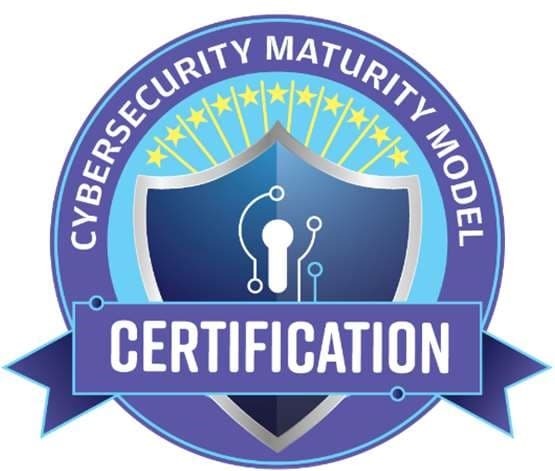Introduction
For organizations working with the U.S. Department of Defense (DoD), compliance is no longer optional. It’s a prerequisite for doing business. Two of the most important frameworks contractors must navigate are NIST SP 800-171 and the Cybersecurity Maturity Model Certification (CMMC).

At first glance, these frameworks may seem interchangeable. Both focus on protecting Controlled Unclassified Information (CUI), both rely on sets of security controls, and both are central to defense contracting. However, there are important differences between them, especially with the introduction of CMMC 2.0.
In this post, we’ll break down the overlap and differences between NIST SP 800-171 and CMMC, explain why both matter, and provide guidance on how organizations can efficiently align their security posture with both frameworks.
Why These Frameworks Exist
Before diving into the details, it’s important to understand the purpose of each framework.
- NIST SP 800-171: A publication from the National Institute of Standards and Technology that outlines 110 security requirements for protecting CUI in non-federal systems. It sets the baseline standard for cybersecurity practices across government contractors.
- CMMC: A DoD-specific certification framework that builds on NIST SP 800-171 by requiring assessments (either self-assessments or third-party reviews) to validate compliance. In other words, CMMC takes NIST requirements and turns them into a certification program.
Together, they create a layered approach: NIST provides the “what,” and CMMC enforces the “how and who verifies.”
What is NIST SP 800-171?
Published in 2015, NIST SP 800-171 outlines 14 control families with 110 individual requirements. These families include areas like access control, incident response, audit logging, system integrity, and awareness training.
The standard applies to any contractor or subcontractor that stores, processes, or transmits CUI. Compliance with NIST SP 800-171 is required under DFARS 252.204-7012, making it a legal obligation for defense contractors.
Organizations demonstrate compliance through a System Security Plan (SSP) and a Plan of Action and Milestones (POA&M). However, NIST itself does not require a certification it expects contractors to self-attest.
What is CMMC?
The Cybersecurity Maturity Model Certification (CMMC) was introduced by the DoD in 2020 as a way to enforce and verify compliance with NIST SP 800-171. The DoD had long struggled with contractors who claimed to meet NIST requirements but lacked the documentation or controls to prove it.
With the release of CMMC 2.0, the model was simplified from five levels to three:
- Level 1 (Foundational): Covers 17 practices, aligned with FAR 52.204-21, focused on protecting Federal Contract Information (FCI). Requires annual self-assessment.
- Level 2 (Advanced): Requires full compliance with all 110 NIST SP 800-171 requirements. Contractors handling CUI will either conduct annual self-assessments or undergo third-party assessments every three years (depending on the sensitivity of data).
- Level 3 (Expert): Targets organizations working with the most sensitive defense data. Builds on NIST SP 800-171 with additional practices from NIST SP 800-172. Requires government-led assessments.
Unlike NIST SP 800-171, CMMC is not just about implementing controls, it’s about proving compliance through assessments and documentation.
Key Differences Between NIST SP 800-171 and CMMC
Let’s break down the most important distinctions:
1. Framework vs. Certification
- NIST SP 800-171 is a framework of requirements. Organizations self-assess compliance and maintain documentation.
- CMMC is a certification program. It requires organizations to undergo assessments (self, third-party, or government-led) to validate their compliance.
In short: NIST tells you what to do; CMMC makes you prove you’re doing it.
2. Applicability
- NIST SP 800-171 applies to any organization that handles CUI, regardless of whether they contract directly with DoD or through a subcontract.
- CMMC applies specifically to DoD contractors and subcontractors seeking eligibility to bid on defense contracts.
3. Assessment Process
- NIST SP 800-171: Contractors conduct self-assessments and submit scores into the Supplier Performance Risk System (SPRS).
- CMMC 2.0: Assessment requirements vary by level. Level 1 and some Level 2 organizations may self-assess, but many Level 2 contractors and all Level 3 contractors require third-party or government-led audits.
4. Levels of Maturity
- NIST SP 800-171 has no maturity levels. It’s a binary measure (you either meet the 110 requirements or you don’t).
- CMMC introduces maturity levels (1, 2, and 3 under version 2.0) that determine assessment rigor and eligibility for contracts.
5. Enforcement and Penalties
- NIST SP 800-171: Enforcement is relatively light. Contractors are expected to self-report honestly, though inaccurate reporting can lead to contract penalties.
- CMMC 2.0: False self-attestation can result in penalties under the False Claims Act (FCA), creating much higher stakes for noncompliance.
6. Documentation Requirements
Both frameworks require SSPs and POA&Ms, but under CMMC 2.0, these documents will be scrutinized more closely during assessments.
How NIST and CMMC Work Together
Think of NIST SP 800-171 as the foundation and CMMC as the enforcement mechanism.
- Step 1: Contractors implement the 110 NIST controls.
- Step 2: They document compliance through SSPs and POA&Ms.
- Step 3: Under CMMC, they validate compliance through the required assessment process.
Organizations that are already compliant with NIST SP 800-171 are in a strong position for CMMC 2.0 certification. However, gaps often emerge in documentation, continuous monitoring, and proof of implementation.
Challenges Contractors Face
- Misinterpreting Overlap
Many contractors assume that if they’ve implemented NIST SP 800-171, they’re automatically CMMC-ready. While the controls align, assessment readiness requires additional effort. - Documentation Depth
NIST requires SSPs and POA&Ms, but CMMC assessments demand evidence of control enforcement. This means policies, logs, training records, and proof of ongoing compliance, not just plans. - Cost and Resources
Small and mid-sized contractors often lack in-house expertise to implement, monitor, and document compliance.
Practical Steps to Align with Both Frameworks
Step 1: Conduct a Readiness Assessment
Evaluate your current NIST SP 800-171 compliance. Map each control, assign ownership, and document status in your SSP and POA&M.
Step 2: Build Continuous Monitoring
Move from one-time compliance efforts to ongoing monitoring of your environment. Regular reviews, log audits, and policy updates help avoid surprises during assessments.
Step 3: Strengthen Documentation
Prepare assessment-ready documentation: policies, procedures, incident response plans, and training evidence.
Step 4: Prepare for Assessments
If you fall under CMMC Level 2 or 3, engage a C3PAO (Certified Third-Party Assessment Organization) early. This ensures enough time to remediate gaps before your formal audit.
The Business Case for Compliance
While compliance often feels like a cost center, aligning with NIST SP 800-171 and CMMC creates significant value:
- Contract Eligibility: Without compliance, contractors cannot compete for DoD work.
- Reputation and Trust: Certification signals reliability and professionalism to government and commercial clients.
- Cyber Resilience: Beyond contracts, these frameworks reduce breach risks and costly incident recovery.
Conclusion
NIST SP 800-171 and CMMC may share common ground, but they serve different roles in the DoD compliance ecosystem. NIST defines the security requirements, while CMMC enforces them through certification.
For contractors, the path forward is clear: implement NIST controls, document compliance, and prepare for CMMC assessments. By treating compliance as both a contractual obligation and a business opportunity, organizations not only secure contracts but also strengthen their defense against evolving cyber threats.

